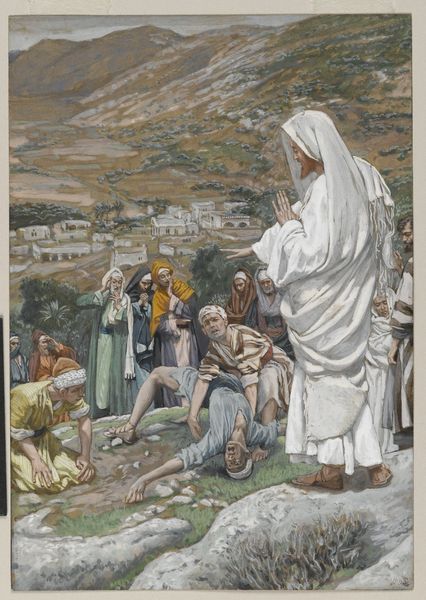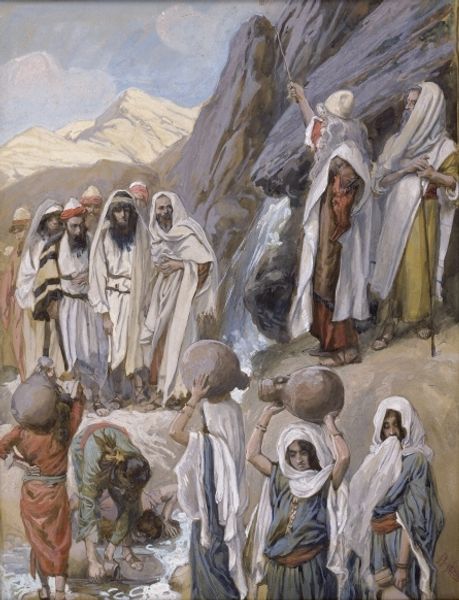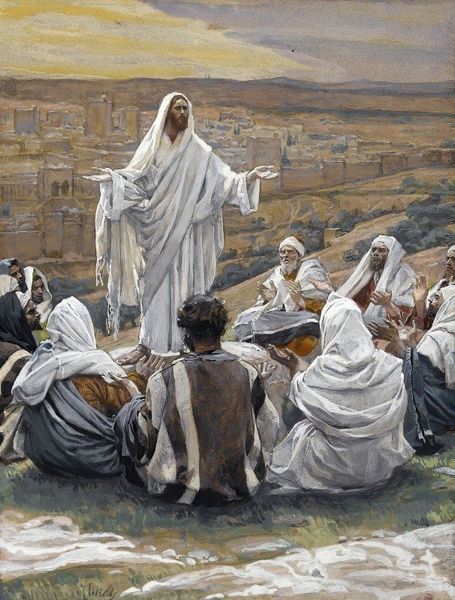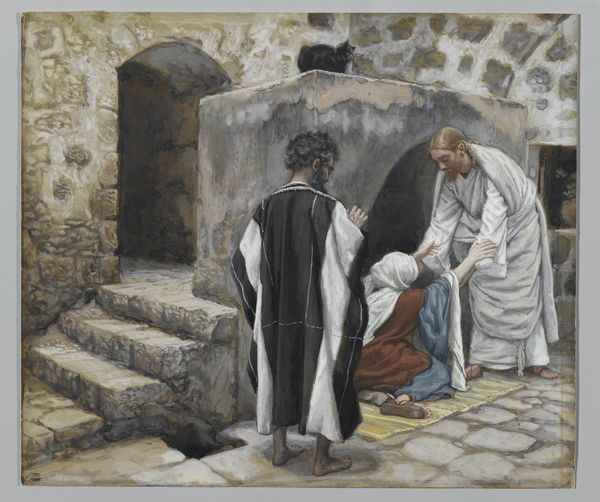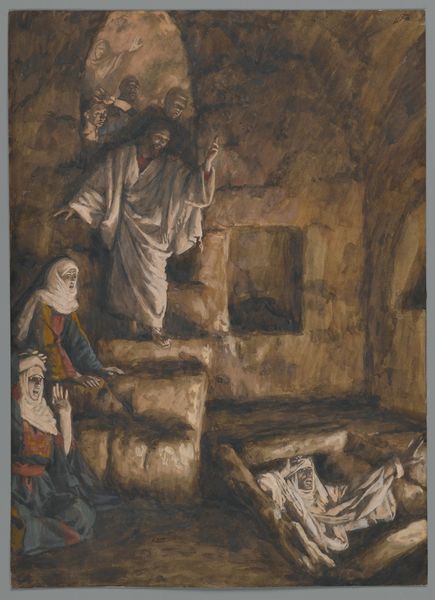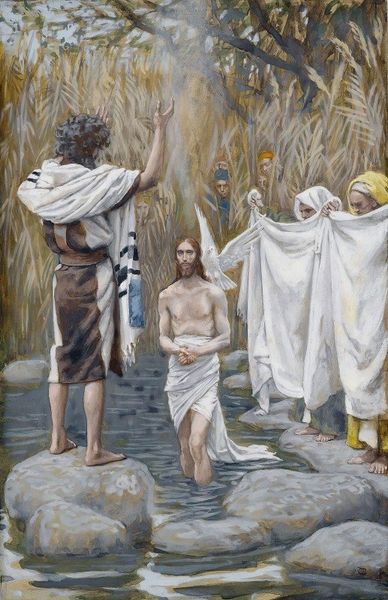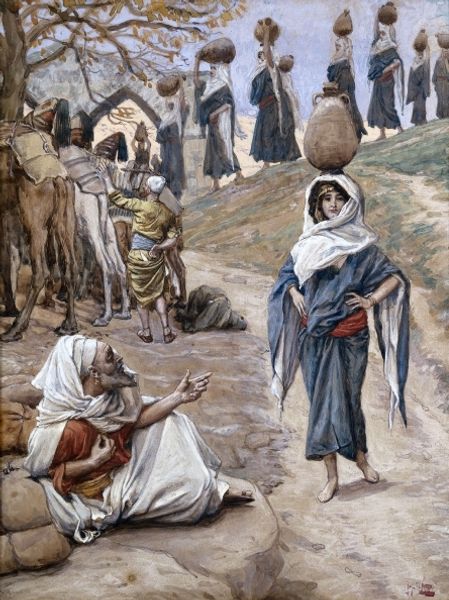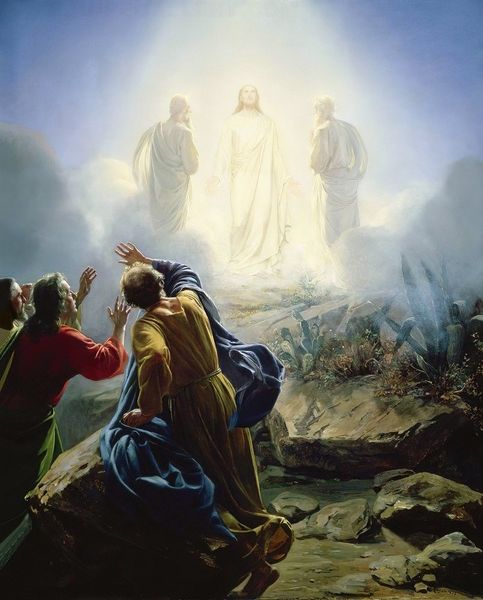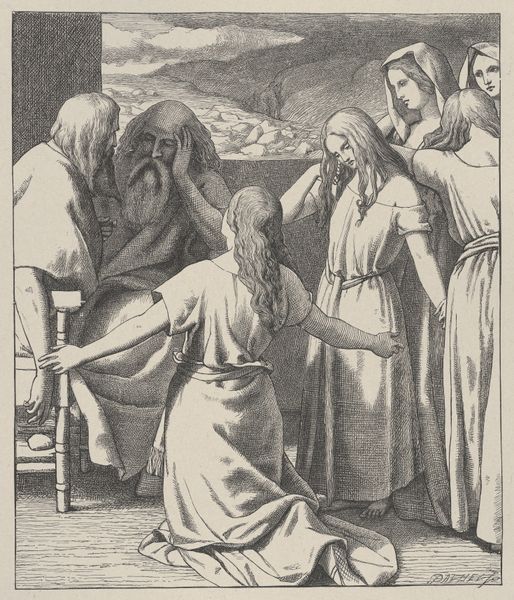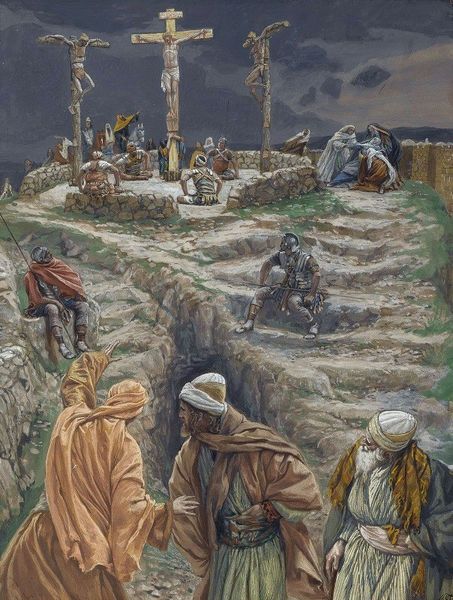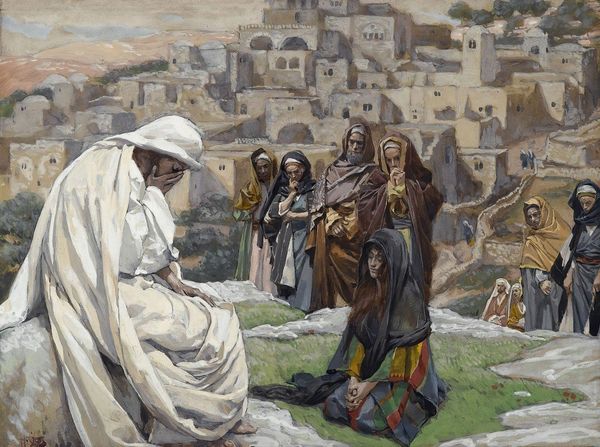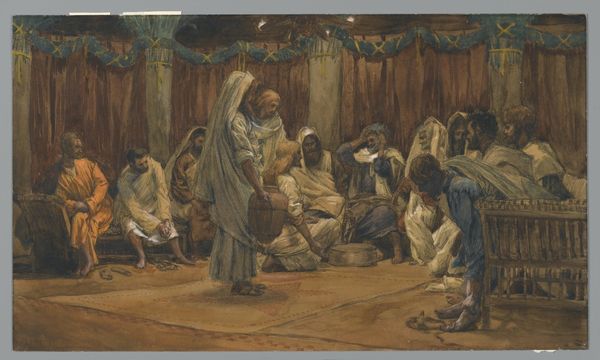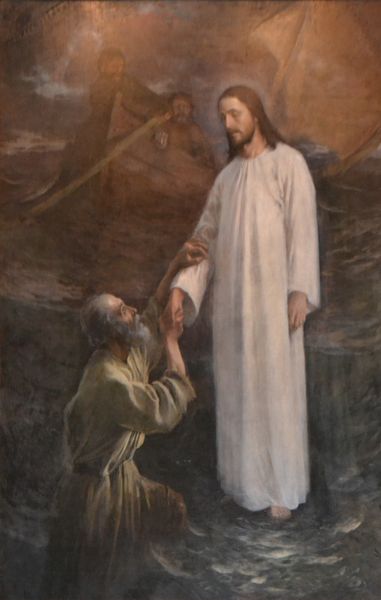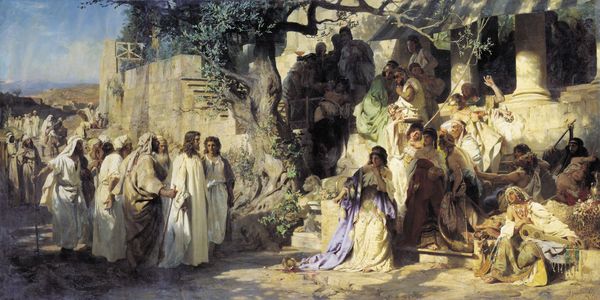
watercolor
#
narrative-art
#
figuration
#
oil painting
#
watercolor
#
watercolour illustration
#
pre-raphaelites
Copyright: Public domain
Editor: We’re looking at James Tissot’s watercolor illustration, "The Transfiguration." It's…well, it's clearly a religious scene. It's crowded with figures reacting to a central, glowing figure. The emotion seems like a mix of awe and terror. What do you see in this piece, especially considering its time? Curator: It’s interesting you pick up on the emotional tension. Tissot, though part of the Pre-Raphaelite movement, complicates their typical romanticism. “The Transfiguration”, especially given its place in a series illustrating the life of Christ, has to be considered alongside late 19th-century debates around faith and modernity. Do you notice anything about how Tissot visually differentiates Christ from the other figures? Editor: Absolutely! The stark white robe and, of course, the light radiating from him are pretty hard to miss. He’s almost ethereal. But I am wondering about the men with him. Curator: Those are Moses and Elijah, key figures in the Hebrew Bible. Tissot is engaging with centuries of theological interpretation about continuity and change within religious traditions. He positions Jesus as fulfilling, yet also superseding, earlier prophets. Thinking intersectionally, how might this positioning also reflect the power dynamics of the time? Editor: I see what you mean. The placement could be interpreted in terms of religious colonialism or cultural appropriation – presenting Christianity as a more “advanced” faith that eclipses Judaism. It adds a layer of complexity that isn't immediately apparent. Curator: Precisely! The painting opens up dialogues about faith, power, and representation, reflecting not just biblical narrative but also the cultural milieu of late 19th-century Europe. Editor: I wouldn't have considered it that way on my own, but understanding the historical context definitely shifts my perspective on the piece. Curator: Exactly! Art is never created in a vacuum, and unpacking these layers reveals so much about both the past and present.
Comments
No comments
Be the first to comment and join the conversation on the ultimate creative platform.
